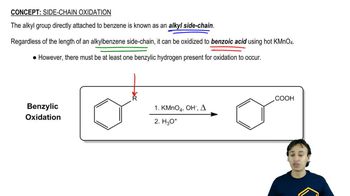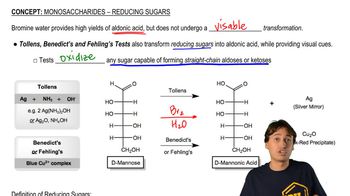Textbook Question
What product or products are obtained when D-galactose reacts with each of the following?
e. Br2 in water
 Verified step by step guidance
Verified step by step guidance Verified video answer for a similar problem:
Verified video answer for a similar problem:



 4:15m
4:15mMaster Monosaccharides - Weak Oxidation (Aldonic Acid) with a bite sized video explanation from Johnny
Start learning